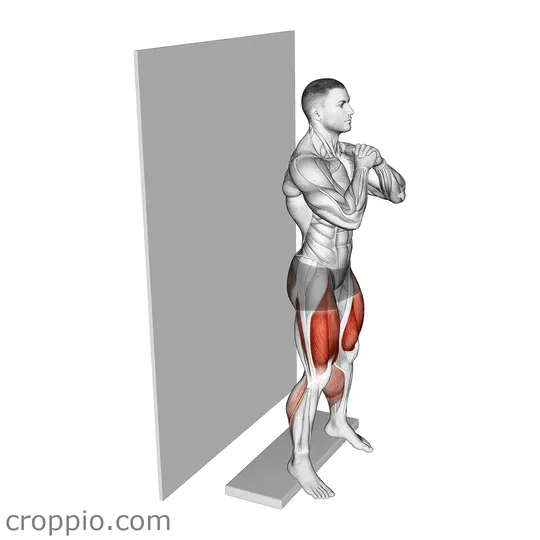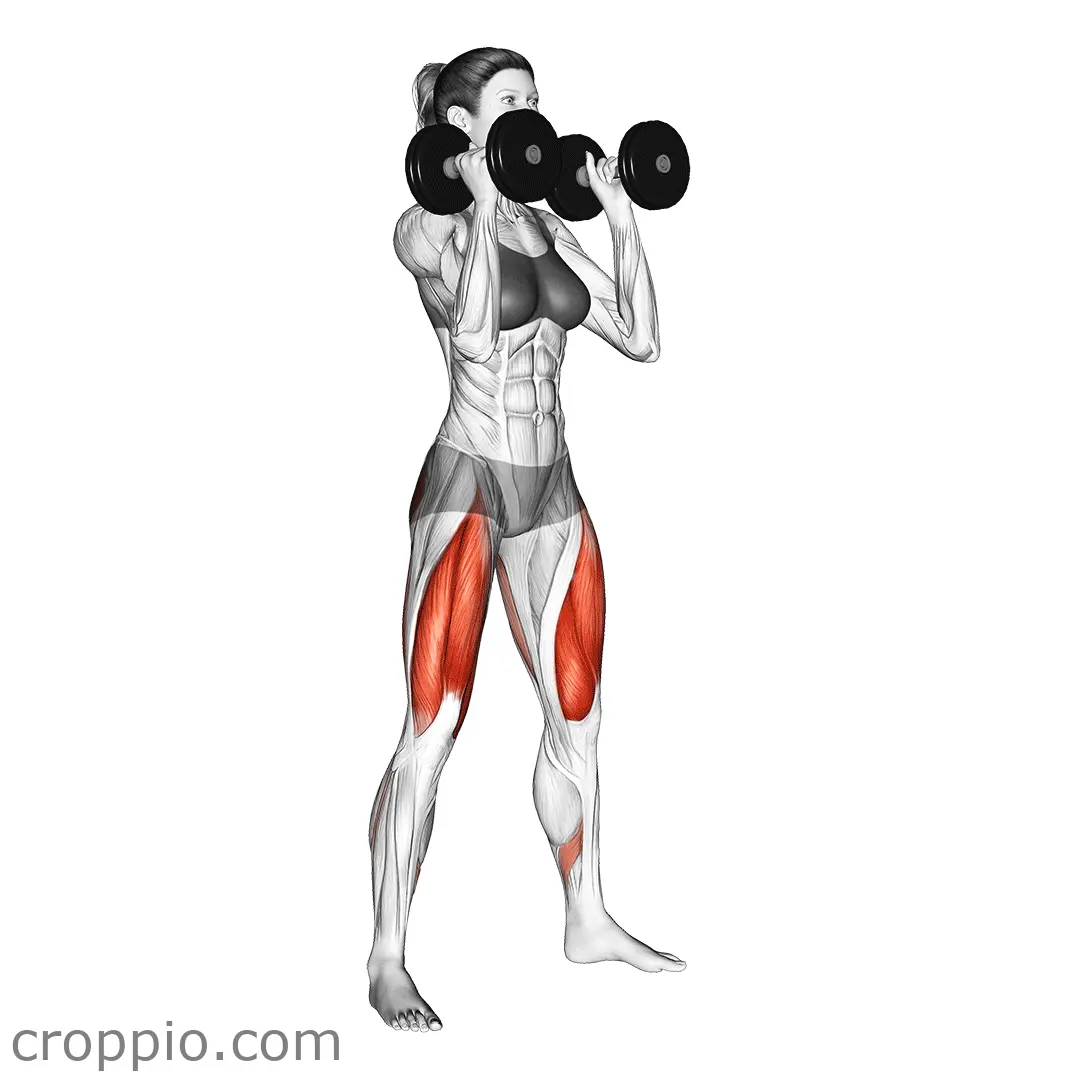Heel Raised Wall Sit

Muscles Involved
The heel raised wall sit primarily targets the quadriceps, which are the large muscles located at the front of the thigh. It is essential for improving knee extension and stability. Additionally, this exercise engages the gluteus maximus, which helps in hip extension, and the hamstrings, which play a supporting role in maintaining balance during the hold. Secondary muscles involved include the calves (gastrocnemius and soleus), which are activated due to the heel raise aspect of the move, enhancing overall stability and strength of the lower legs, as well as the core muscles that assist in maintaining proper posture against the wall.
Top Mistakes
- Allowing the knees to jut forward past the toes, which can cause strain and increase the risk of injury.
- Not maintaining a straight back against the wall, leading to poor posture and ineffective muscle engagement.
- Letting the heels sink down or not keeping consistent elevation, which diminishes the effectiveness of the exercise.
- Holding the position for too long without proper form, which may lead to fatigue and compensatory movements.
Execution Tips
- Start by standing with your back against the wall, feet about hip-width apart, and slightly forward from the wall.
- Gently slide your back down the wall while keeping your core engaged, lowering until your thighs are parallel to the ground.
- As you lower into the wall sit, raise your heels off the ground, balancing on the balls of your feet to maximize calf engagement.
- Ensure your knees are aligned with your ankles and do not cross beyond your toes; adjust the distance of your feet from the wall if necessary.
- Maintain a strong core and straight back, pushing your shoulder blades and head gently against the wall.
Workouts
The heel raised wall sit can be an excellent addition to a lower body workout routine. Aim for 3 to 4 sets, holding the position for 20 to 60 seconds, depending on your fitness level. To increase intensity, consider adding weights or performing the exercise on one leg (single-leg wall sit). It can be effectively paired with complementary exercises such as lunges, squats, and calf raises to enhance overall lower body strength. Incorporating it into a circuit training format can also keep the heart rate elevated, maximizing your workout efficiency.
Conclusion
The heel raised wall sit is a powerful exercise for developing lower body strength and stability. By focusing on the quadriceps and engaging the calves, it enhances functional strength essential for daily activities and athletics. Additionally, with its isometric nature, it promotes endurance in the muscles while being low-impact, making it suitable for individuals of varying fitness levels. Consistent practice can lead to improved lower body power, balance, and overall muscular endurance.



